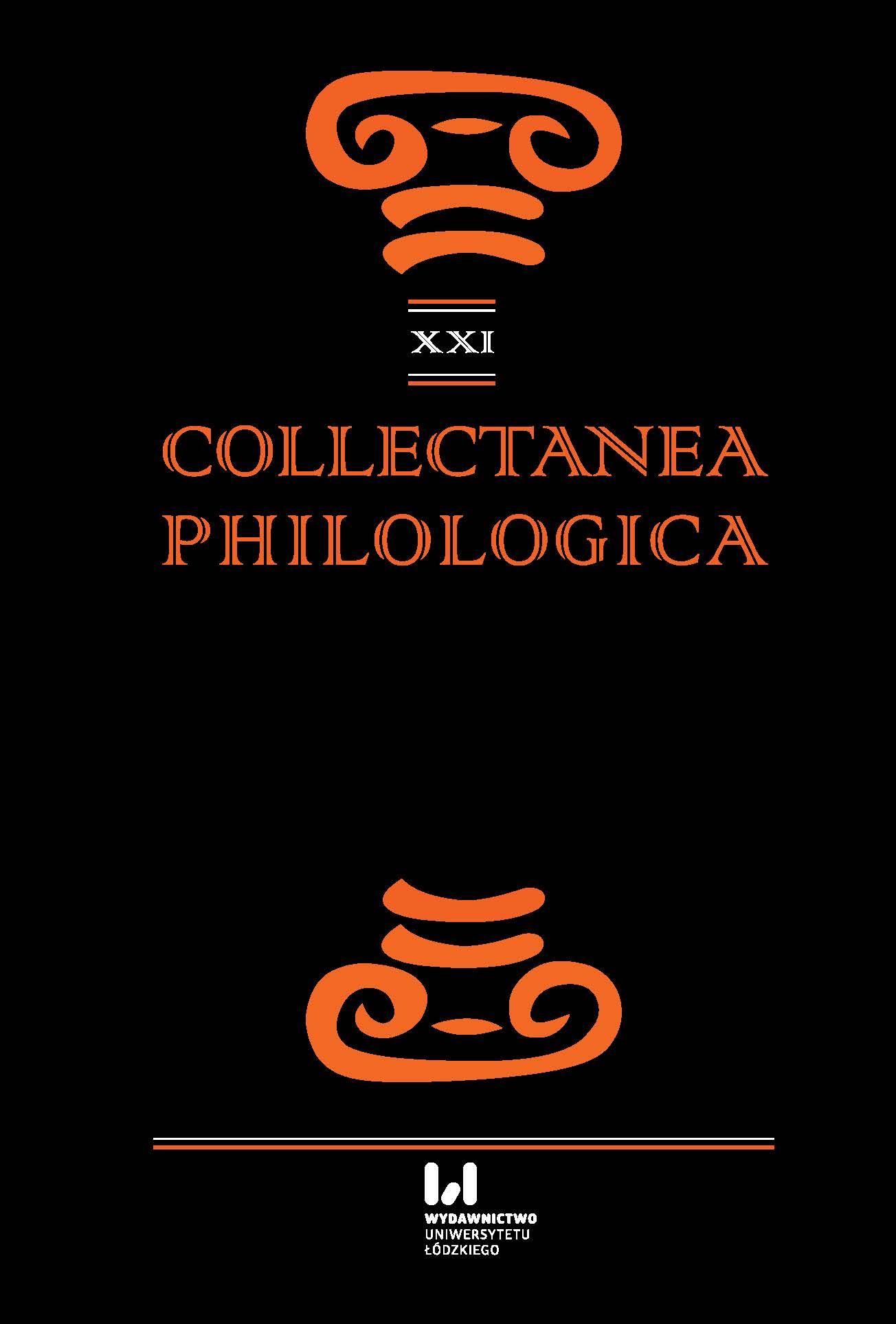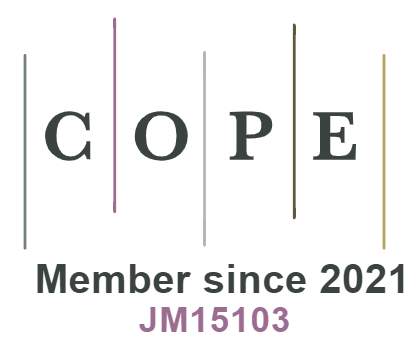Wątki epickie a malarstwo wazowe na przykładzie wybranych przedstawień motywów homeryckich: Doloneja
DOI:
https://doi.org/10.18778/1733-0319.21.07Słowa kluczowe:
Greek vase painting, south Italian vase painting, Doloneia, pseudo-euripidean Rhesus, Greek iconographyAbstrakt
The oral form of transmission of the early Greek epics allowed for the free shaping of content by the poet, whose task was to create a coherent narrative, intelligible for all the listeners, while maintaining its key feature – authenticity. This, however, lead to variability in content due to the desire to supplement, that is to show detailed presentations of events or to adapt these to local traditions. Incongruities in content between individual customary versions of these stories are illustrated in relics of vase painting. This article discusses the iconography of scenes associated with the Doloneia, book 10 of the Iliad, in reference to the contents of the epic. Based on a few examples still extant, a formal analysis was conducted on the themes of the main structure and secondary characters shown in Greek illustrations from the Archaic and Classical periods, as well as of southern Italic examples, allowing us to show how versions of the story formed at a given time and to reflect on the changes introduced.
Bibliografia
Arias, P.E. (1941). Corpus Vasorum Antiquorum: Syracuse, Museo Archeologico Nazionale 1. Roma: Libreria dello Stato.
Google Scholar
BD. Beazley Archive Pottery Database.
Google Scholar
Beazley, J.D. (1963). Attic Red-Figure Vase-Painters. Oxford: Clarendon Press.
Google Scholar
Buxton, R. (2013). Myths and Tragedies in Their Ancient Greek Contexts. Oxford: Oxford University Press.
Google Scholar
Danek, G. (1988). Studien zur Dolonie. Wien: Verlag der Österreichischen Akademie der Wissenschaften.
Google Scholar
Davidson, O.M. (1979). “Dolon and Rhesos in the Iliad”. Quaderni Urbinati di Cultura Classica I, 61–66.
Google Scholar
Euripides (1913). Euripidis Fabulae, vol. 3. G. Murray (red.). Oxford: Clarendon Press.
Google Scholar
Eurypides (1882). Rezos. Przeł. Z. Węclewicz. Poznań: Biblioteka Kórnicka.
Google Scholar
Fenik, B.C. (1964). Iliad X and the Rhesus: The Myth. Brussels: Latomus.
Google Scholar
Fries, A. (2014). Pseudo-Euripides, “Rhesus”: Edited with Introduction and Commentary. Berlin/ Boston: De Gruyter.
Google Scholar
Giuliani, L. (1988). Bildervasen aus Apulien. Berlin: Staatliche Museen Preussischer Kulturbesitz.
Google Scholar
Giuliani, L. (1995). Tragik, Trauer und Trost. Bildervasen für eine apulische Totenfeier. Berlin: Staatliche Museen zu Berlin.
Google Scholar
Giuliani, L. (2010). Rhesos: On the Production of Images and the Reading of Texts, [w:] E. Walter-Karydi (red.). ΜΥΘΟΙ, ΚΕΙΜΕΝΑ, ΕΙΚΟΝΕΣ. ΟΜΗΡΙΚΑ ΕΠΗ ΚΑΙ ΑΡΧΑΙΑ ΕΛΛΗΝΙΚΗ TEXNAI. Ithaca: Kentro Odysseiakon Spoudon, 239-245.
Google Scholar
Homer (1920). Homeri Opera in five volumes. Oxford: University Press.
Google Scholar
Homer (1999). Iliada. Przeł. K. Jeżewska. Warszawa: Prószyński i S-ka.
Google Scholar
Liapis, V. (2009a). “Rhesus Revisited: The Case for a Fourth-Century Macedonian Context”. Journal of Hellenic Studies 129, 71-88.
Google Scholar
Liapis, V. (2009b). Rhesus: Myth and Iconography, [w:] J.C.R. Cousland, J.R. Hume (eds.). The Play of Texts and Fragments: Essays in Honour of Martin Cropp. Leiden/Boston: Brill, 273–291.
Google Scholar
Liapis, V. (2017). Rhesus, [w:] L.K. McClur (red.). A Companion to Euripides. Chichester: Wiley/ Blackwell, 334–347.
Google Scholar
Mainoldi, C. (1984). L’image du loup et du chien dans la Grèce ancienne d’Homère à Platon. Paris: Editions Ophrys.
Google Scholar
Petrakova, A. (2007). Corpus Vasorum Antiquorum: St. Petersburg, State Hermitage Museum 5. Roma: “L’Erma” di Bretschneider.
Google Scholar
Pindar (1987). Pindari Carmina cum framentis. B. Snell, H. Maehler (red.). Lipsiae: Teubner.
Google Scholar
Scholia Graeca in Homeri Iliadem, (1875–1888). W. Dindorf (red.). Oxonii: Clarendon.
Google Scholar
Steiner, D. (2015). „’Wolf’s Justice’: The Iliadic Doloneia and the Semiotics of Wolves”. Classical Antiquity, 34,2, 335–369.
Google Scholar
Taplin, O. (2007). Pots and Plays. Interactions between Tragedy and Greek Vase-Painting of the Fourth Century B.C. Los Angeles: J. Paul Getty Museum.
Google Scholar
Trendall, A.D. (1967). The Red-Figured Vases of Lucania, Campania and Sicily. Oxford: Clarendon Press.
Google Scholar
Trendall, A.D., Cambitoglou, A. (1978). The Red-Figured Vases of Apulia. Oxford: Clarendon Press.
Google Scholar
True, M. (1995). The Murder of Rhesos on a Chalcidian Neck-Amphora by the Inscription Painter, [w:] J. Carter, S. Morris (red.). The Ages of Homer. A Tribute to Emily Townsend Vermeule. Austin, Texas: University of Texas Press, 415–429.
Google Scholar
Zieliński, K. (2014). Iliada i jej tradycja. Studium z zakresu greckiej tradycji oralnej. Wrocław: Wydawnictwo Uniwersytetu Wrocławskiego.
Google Scholar
Pobrania
Opublikowane
Jak cytować
Numer
Dział
Licencja

Utwór dostępny jest na licencji Creative Commons Uznanie autorstwa – Użycie niekomercyjne – Bez utworów zależnych 4.0 Międzynarodowe.












